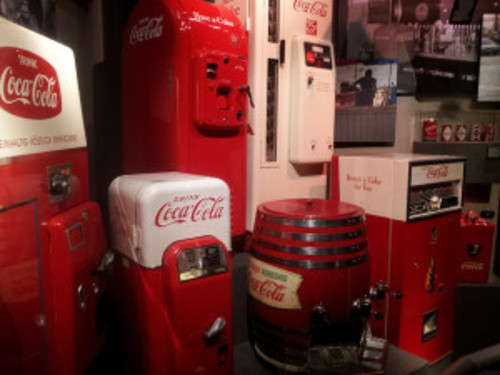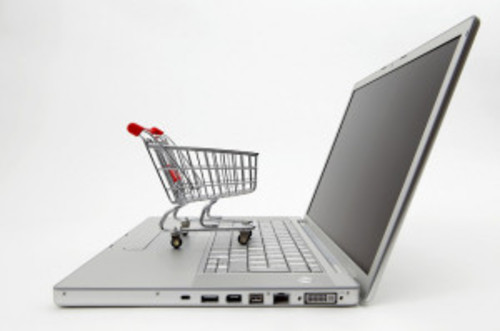When you read about our inevitable march to a world dominated by connected devices, you start to get the idea that when it comes to the Internet of Things, actual shopping might become a thing of the past.
Could the day come when the products we need arrive at our homes without us lifting a finger? Or might we one day walk through a store where beacons pick up on our presence and desires and begin assembling an order for us to purchase with the wave of a hand as we leave the physical store on the way to our homes where our purchases will greet us?
That's a tall order, but would it be so horrible if staples like toilet paper, light bulbs, diapers milk, butter and the like showed up when needed without us putting in the work?
Already there are companies that are betting their futures on the Gold Rush surrounding the move to a fully connected world. Silicon Valley's Jasper Technologies is behind the technology that helps power connected pajamas, Coke machines and Nissan cars, according to Bloomberg/Businessweek.
Sure, these smart devices are able to alert parents to when their kid's fever spikes or let a distributor know that it's time to fill up a vending machine or help police track down a stolen vehicle. But they could just as easily let merchants and suppliers know that it's time to send a bigger pair of pajamas, or that it's time to drop a Coke into a customer's waiting hands or that it's time for a customer's oil change.
And while you've got to love the convenience, it turns out that even less advanced moves toward seamless shopping are creating consumer anxiety, at least according to a survey by McCann's Truth Central, the research arm of ad agency McCann. In its recent report "The Truth about Shopping," which MediaPost wrote about here, the agency found that 57 percent of consumers are worried that they won't discover as many new products if retailers always show them just what they are looking for.
Think of it as the e-commerce version of FOMO (fear of missing out) -- and as something retailers should pay close attention to. Yes, if you're a retailer you might get the feeling that you simply can't win. You're killing yourself to provide richer personalization for customers -- to show that you know your customers and that you know what they need and desire. And yet it appears customers are saying, "Show me what I want, but not only what I want."
Then again, 52 percent of consumers polled in the same McCann survey said that search on the Web was not personal enough. That figure seems at odds with the FOMO anxiety, though it is in line with other research, including by Janrain and Synqera, that indicates that online shoppers want relevant results and that they become frustrated when it appears that websites they know have no idea who they are.
Clearly, the answer is not to back down on the personalization front. But like so much surrounding big data, it comes down to how the data is used. (Where have you heard this before?) Tracey Wallace makes a similar point in analyzing Mary Meeker's annual "Internet Trends" report, which points out the tremendous opportunity that rests with the unexamined data that all of us are producing every day. Again, it's not the amount of data you collect, it's what you do with it.
Rahul Bhandari, an expert in personalization here at BloomReach, says that true personalization must factor in intent as well as a consumer's shopping history. The fact is, a consumer's intent changes and a smart system needs to acknowledge that.
"The danger is, if you over-personalized, you end up so tunnel-visioned that when a person's intent changes, you can't get to it, so we have to strike a balance."
Instead of force-feeding products to consumers, personalization should work more like an expert guide or a good friend who can suggest new items based in part on demonstrated preferences. Bhandari uses the example of a man who walks into a department store and tells a sales clerk he plans to buy some shoes. Naturally, the salesperson will begin showing him or talking to him about men's shoes. But if the man says that actually he is buying some shoes for his wife, as a gift, the clerk has new information and begins to show the man women's shoes.
Understanding the importance of intent will only become more important as we become more connected. Already we are living with smart homes filled with smart appliances and even smart clothing. Gartner analysts like Michael Maoz and Hung LeHong talk about a future that is practically here, in which businesses can maintain nearly constant contact with consumers through a host of connected devices that we all will use throughout the day.
"They will be a channel of engagement," LeHong, addressing a group of consumer-serving companies, says of smart cars, ovens, diapers and on and on. "You guys need to figure out how you're going to do that with your customer."
Tops on the list of how to engage should be to rely on the data, but not blindly. The winners in the Internet of Things world won't use data as a substitute for truly getting to know their customers. Instead, they'll use the data to get to know them better, including better understanding what it is they are after at any given time.
Photo of vending machines by Dan Century and laptop with cart by ezmaal published under Creative Commons license.
Mike Cassidy is BloomReach's storyteller. Reach him at mike.cassidy@bloomreach.com and follow him on Twitter at @mikecassidy.


